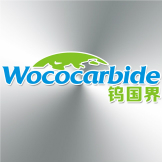Unfortunately, the people you are speaking with are correct. However, that’s assuming you need to know what alloy you have exactly. I can give you some guidelines that, in most cases, will allow you to calculate what alloy family you have. Usually that is enough to select the correct filler metal. However, these are only guidelines and they are not foolproof. They are grouped along product lines.
Extrusions. If you have a hollow section, round, rectangular, or otherwise, you have an extrusion. Extrusions also are made as strips or solid shapes. If you look closely at the surface of an extrusion, you will see a pattern of fine parallel lines along its entire length. These come from the extrusion die. In North America, extrusions are almost always a 6XXX alloy, such as 6061 and 6063. As you may remember, these can be welded with either 4043 or 5356.
The exception to this is if you are dealing with something made in Japan, in which case the most common extrusion alloy is 7005, which should be welded with 5356. Be especially careful of this when repairing Japanese motorcycles, bicycles, or cars.
Sheet and Plate. This is a bit trickier. The most common sheet and plate grades are the 5XXX alloys, such as 5083 and 5154, which should be welded with 5356, 5556, or 5183. However, other alloys such as 6061 are commonly available as sheet or plate. There is no easy way to tell which alloy you have. But the good news is that all of them are readily weldable using 5356.
Be very careful that you don’t have 2024. As we have discussed before, this alloy is extremely crack-sensitive and should never be welded. How would you know this? Alloys like 2024 often are marked with the alloy designation.
Castings. The most common casting alloys by far are the AlSiMg heat-treatable castings such as A356 and A319. The correct filler metal for the 3XX casting alloys is 4043. If you don’t know what the casting alloy is, it is logical to assume that is a 3XX alloy.
Again, this isn’t foolproof. I would estimate that 90 percent of the castings you see will be 3XX alloys, but 5XX casting alloys are also somewhat common. These are non–heat-treatable and should be welded using 5356. Unfortunately, there is no easy way to tell a 3XX casting from a 5XX casting.
Well, I don’t suppose any of this information is scientific, but hopefully it will allow you to make a more informed filler metal choice the next time you are confronted with this dilemma.
[
More ]
[
Close ]
reply
 0861803284
0861803284

